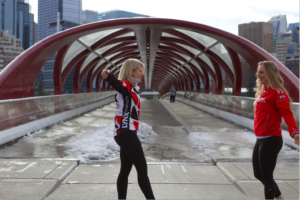Is TIME an issue for you?
Don’t have time for mobility? Did you know mobility is CRUCIAL to not only improve performance but also prevent injury – and can be improved in as little as 10-15 minutes per day! Mobility starts at the joints – an unhealthy joint often leads to limitations in mobility. Signs of an unhealthy joint include clicking, grinding and locking feelings which often leads to pain in our shoulders, hips and knees. Although we can usually run though this pain in the short term, eventually we will be forced to take time away from training, leaving us with significant damage to those joints in the long term.
Why does this happen?
Your joints, for the most part, are avascular which means they don’t have a constant blood supply. Why is this an issue? Blood carries oxygen and nutrients which help keep our joints healthy, in addition to flushing out “junk” that builds up. Since joints don’t have their own blood supply, we have to get blood flowing there ourselves. We do this through movement. The more we move our joints, the more blood we send there to help heal / keep them healthy. Unfortunately, as life gets busy we tend to be less and less active during the day. This means there is less blood flowing through our joints – essentially “starving” our joints of nutrients.
Is aging an issue?
NO!! If you belong to the collection of humans who use the excuse “oh it’s just because I’m getting old” to refer to a physical limitation then read on! One of the biggest reasons we have pain in our hips, knees and shoulders as we get older is because we have been progressively adopting a sedentary lifestyle. The less we move, the more our joints deteriorate. Although it may seem sudden, that achy feeling in your hips, knees and shoulders is likely the result of many years of joint “starvation” to the point of physical pain.
But I AM active?!
Being generally active – walking, swimming, running ect. is important, but these activities are not enough to improve the health of your joints. The key thing to keep in mind is that joints require full range of motion activities to preserve their health. Using only limited ranges of motion – such as running, will promote some blood flow, but not enough for optimal join health.
What can you do?
Move your joints daily! In addition to moving your joints, it is important to move them with purpose – i.e. no floppy limbs. To eliminate floppy limbs, create internal tension by squeezing your arm, legs and core to a point where if somewhere were to push you, you would not fall over. This tension activates deeper layers of your muscle and gets increased blood flow to your joints. Once you have created this tension, you can begin doing full range of motion exercises, focusing on each joint separately. Create minimal tension through your body if you are doing the exercises in the morning when you first wake up (30% of a max effort) but more if you are doing them before a workout (60-80%).
Once you achieve a sufficient range of motion, you can begin a base phase of strength training – outlined here.
Amanda Regnier
Running Coach, MSc. Strength and Conditioning, C.S.C.S
Movement Specialist (FRC®)
Comment from Coach Mary: Great information in this post Amanda! When I was letting my broken toe heal I was less active than usual. I did swim (with a pull buoy) but this meant my legs were just floating behind me and I avoided flip turns and pushing off the walls. I was also way more sedentary for that first month. The result – I had achy knees and ankles. After reading your post now I know why! I didn’t keep my other joints moving! Lesson learned.
Contact Coach Amanda for more information on joint / mobility specific coaching options, such as video demo’s, 1-1 online training (through Skype) and in-person training (in Calgary). You can also work with Amanda during the track sessions she coaches Wed. and Thrus. nights at MRU. You can find details under “RUN” on our classes page.
